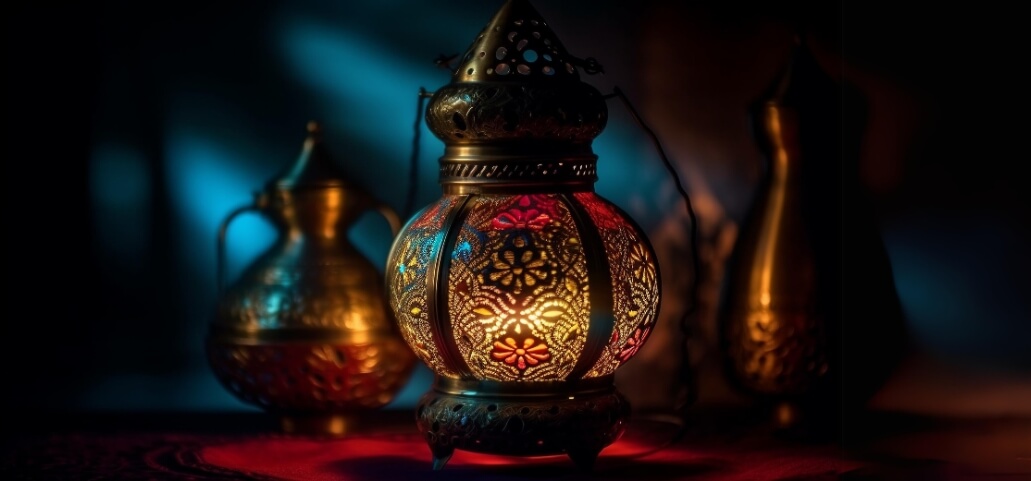Discovering how to identify a Tiffany lamp is akin to finding a hidden vintage treasure. Tiffany lamps, with their captivating history and enduring appeal, represent unparalleled craftsmanship. Distinguishing between authentic and replica Tiffany lamps is vital. In this guide, we’ll delve into Tiffany lamps’ unique attributes, shedding light on their history and significance. Unraveling their distinct characteristics is key to mastering their identification. Join us to unlock the secrets of recognizing genuine how to identify a tiffany lamp, empowering you to value and cherish these timeless pieces in their full splendor.
Characteristics How To Identify A Tiffany Lamp
Stained Glass Composition
Tiffany lamps are renowned for their exquisite stained glass, a defining feature that contributes significantly to their allure. The materials used in creating the stained glass panels are crucial to understanding the lamp’s authenticity. Louis Comfort Tiffany, the mastermind behind these lamps, employed a range of high-quality materials to craft the stained glass, including opalescent glass, iridescent glass, and confetti glass. These components were carefully selected to provide an enthralling combination of hues, textures, and translucency.
The color combinations and patterns showcased in Tiffany lamps are remarkable and distinctive. Tiffany’s innovative use of multiple glass colors in a single panel, known as the “copper foil” technique, resulted in vibrant, intricate designs. The panels often exhibit nature-inspired motifs like flowers, landscapes, and geometric patterns. The careful selection and arrangement of colors, along with the precision in cutting and assembling the glass pieces, are telltale signs of genuine how to identify a tiffany lamp.
Metalwork Details
Complementing the stunning stained glass, the metalwork in Tiffany lamps adds another layer of artistry. Various metals such as bronze, brass, and sometimes silver were used to create the lamp bases, stems, and other structural elements. The metalwork showcases intricate designs and exquisite craftsmanship, often featuring detailed patterns, organic shapes, and sometimes even figurative elements like dragonflies or floral motifs.
The craftsmanship in Tiffany lamp metalwork is exceptional, displaying meticulous attention to detail. Each component was handcrafted, and the metal was often finished with rich patinas or enamels to enhance its visual appeal. This meticulous attention to metalwork details is a hallmark of authentic Tiffany lamps.
Lampshade Shapes and Sizes
Tiffany lamps come in a diverse array of lampshade shapes and sizes, offering collectors and enthusiasts a wide range of options. The lampshades can take various forms, including cone-shaped, globe-shaped, or domed designs. The shapes often complement the overall aesthetic, with some lamps featuring flared edges or intricate contours that contribute to their elegance.
Considering the sizing of how to identify a tiffany lamp is essential, as it influences both the lamp’s aesthetic balance and its functional illumination. While some lamps boast larger, more prominent shades for a grander presence, others may feature smaller, more intimate shades. Sizing considerations, therefore, play a crucial role in understanding the intended design and purpose of each Tiffany lamp.
Understanding these distinct characteristics—ranging from the stained glass composition, metalwork details, to lampshade shapes and sizes—forms the foundation for identifying and appreciating the beauty and craftsmanship inherent in Tiffany lamps.
Identification Process

Examination of Markings or Signatures
One of the primary steps in identifying a Tiffany lamp involves scrutinizing the lamp for markings or signatures. Genuine Tiffany lamps often bear distinct markings from Tiffany Studios, which may include stamps, labels, or engraved signatures. These markings signify the lamp’s authenticity and origin, serving as crucial indicators of a true Tiffany piece.
It’s critical to comprehend the meaning behind these symbols. Tiffany Studios employed various signatures and marks over time, indicating different periods or series of lamp production. For instance, early Tiffany lamps might feature a signature such as “Tiffany Studios New York,” while later pieces might display “Tiffany Studios,” or simply “Tiffany.” Familiarizing oneself with these markings and their historical context aids in accurately identifying the lamp’s era of production and authenticity.
Authentication Through Provenance or Documentation
Authenticating a Tiffany lamp often involves tracing its provenance or documented history. Original documentation accompanying the lamp, such as sales receipts, invoices, or letters of authenticity, significantly enhances its credibility. Such documents provide valuable insights into the lamp’s origins, previous ownership, and its journey through time.
You can never overestimate the value of original documents. It serves as tangible evidence of the lamp’s authenticity, validating its provenance and historical significance. Tracing the lamp’s history and ownership through documented records adds substantial value and credibility to its authenticity.
Consultation with Experts or Appraisers
Seeking professional opinions and evaluations from experts or qualified appraisers is a crucial step in authenticating Tiffany lamps. Consulting experts who specialize in Tiffany lamps or antique lighting can offer invaluable insights based on their expertise and experience. Their trained eye can discern intricate details, craftsmanship, and authenticity that might elude an untrained observer.
Finding reputable experts is essential. Resources such as antique dealers, auction houses, or specialized appraisal services with a proven track record in dealing with Tiffany lamps can provide reliable guidance. Building a network of trustworthy experts ensures accurate assessments and authentications, guiding collectors and enthusiasts in making informed decisions about Tiffany lamp acquisitions.
The identification process for how to identify a tiffany lamp involves a meticulous examination of markings, reliance on documented evidence, and seeking expertise from knowledgeable professionals. These steps collectively contribute to a comprehensive authentication process, ensuring the recognition and appreciation of genuine Tiffany lamp treasures.
Tips for Spotting Authenticity

Quality of Craftsmanship
One of the primary indicators of an authentic Tiffany lamp is the exceptional craftsmanship evident in both the glasswork and metalwork. Paying close attention to intricate details is key. Genuine Tiffany lamps display a remarkable level of precision and artistry in their glasswork and metalwork. Examine the glass panels for precisely cut pieces and intricate soldering. Authentic lamps showcase consistent and meticulous craftsmanship throughout, with no compromise in quality.
Consistency in design and execution is another hallmark of authenticity. Each element of a genuine Tiffany lamp, whether it’s the glass shade or the metal base, demonstrates a cohesive design language. Authentic lamps maintain a consistent level of craftsmanship from top to bottom, showcasing a harmonious blend of beauty and skill in their execution.
Use of High-Quality Materials
High-grade materials are often used in Tiffany lamps. Genuine pieces feature stained glass crafted from high-grade materials like opalescent, iridescent, or confetti glass. These authentic stained glass components exhibit a stunning interplay of colors and textures, adding to the lamp’s visual appeal.
Similarly, the metalwork and fittings in authentic Tiffany lamps are of superior quality. Whether it’s bronze, brass, or silver, the metals used in these lamps are genuine and exhibit exquisite craftsmanship. Authentic metalwork often boasts rich patinas or enamels that enhance the lamp’s overall aesthetic.
Comparison with Reference Materials or Catalogs
Comparing the lamp in question with reference materials or catalogs can be immensely helpful in verifying its authenticity. Utilize reference books or reputable online resources dedicated to Tiffany lamps. These resources often contain detailed information, photographs, and characteristics of authentic lamps.
By examining these references, you can identify common characteristics or features specific to genuine Tiffany lamps. Look for unique design patterns, color combinations, or signature styles associated with Tiffany’s work. This comparative analysis aids in distinguishing authentic pieces from replicas or imitations, providing valuable insights into the lamp’s authenticity.
These tips—focused on craftsmanship, materials used, and comparison with reference materials—serve as essential guidelines in spotting authenticity in Tiffany lamps, empowering enthusiasts and collectors to make informed decisions when identifying genuine pieces.
Common Mistakes to Avoid

Falling for Counterfeit or Replica Lamps
One of the most prevalent errors in identifying Tiffany lamps is inadvertently purchasing counterfeit or replica pieces. It’s critical to recognise warning indicators in order to avoid slipping into this trap. Signs of counterfeit lamps may include inconsistencies in craftsmanship, such as poorly executed glasswork or subpar quality metalwork. Additionally, suspiciously low prices or claims of a “rare find” should raise red flags.
Researching sellers or dealers thoroughly is vital. Reputable and trusted sources are more likely to offer genuine Tiffany lamps. Seek out sellers with established credibility and a track record of dealing in authentic antique lighting. Verifying a seller’s reputation can significantly reduce the risk of purchasing counterfeit lamps.
Overlooking Details in Craftsmanship
Ignoring the value of carefully examining the lamp’s workmanship is another common mistake. Authentic Tiffany lamps exhibit unparalleled artistry and attention to detail. To avoid mistakes, take the time for a meticulous examination of the glasswork, metalwork, and overall construction.
Understanding the value of authenticity is crucial. Even minor discrepancies in craftsmanship could signal a replica. Emphasizing the significance of authentic craftsmanship helps in appreciating the true beauty and value of genuine Tiffany lamps.
Disregarding Professional Opinions
Dismissing expert appraisals or opinions can be a critical mistake when identifying Tiffany lamps. Seeking expert evaluations is invaluable in confirming the lamp’s authenticity. Expert appraisers with experience in antique lighting have the know-how to provide precise evaluations.
Relying on expert opinions helps validate authenticity and prevents errors in judgment. It’s important, however, to be cautious about unreliable sources. Not all appraisers or sources may offer accurate assessments. Therefore, ensuring the credibility and expertise of the appraiser or source is paramount.
Avoiding these common mistakes—such as falling for counterfeits, overlooking craftsmanship details, and disregarding professional opinions—plays a pivotal role in accurately identifying and appreciating genuine Tiffany lamps. For both collectors and fans, these safety measures provide protection from any hazards and guarantee a fulfilling experience.
Conclusion
To sum up, identifying a how to identify a tiffany lamp requires close inspection and familiarity with its essential features. Look for the signature Tiffany Studios mark, quality craftsmanship, and distinctive design elements such as leaded glass shades with intricate patterns. Consider factors like the base material, color palette, and overall aesthetic to determine authenticity. Don’t forget to seek advice from reliable sources and subject matter experts for further help. By familiarizing yourself with these key aspects, you can confidently identify a genuine Tiffany lamp and appreciate its timeless beauty.
Frequently Asked Questions
Q1. What are the key features to look for in a Tiffany lamp for identification?
Answer: Identifying a Tiffany lamp involves unique traits like stained glass composition, intricate metalwork, and diverse lampshade designs.
Q2. How can I differentiate between a genuine Tiffany lamp and a replica?
Answer: Authentic Tiffany lamps display superior craftsmanship, high-quality materials, and specific markings, while replicas often lack these detailed characteristics.
Q3. Are there specific resources to consult for authenticating Tiffany lamps?
Answer: Yes, referencing reliable books, online resources, and seeking expert opinions from reputable appraisers can aid in authentication.
Q4. What are the common mistakes to avoid when identifying Tiffany lamps?
Answer: Avoid falling for counterfeits, overlooking craftsmanship details, and disregarding expert opinions to ensure accurate identification.
Q5. Why is it crucial to understand the history and significance of Tiffany lamps?
Answer: Understanding their historical context enhances the ability to recognize authentic features and appreciate the true value of these timeless pieces of art.

